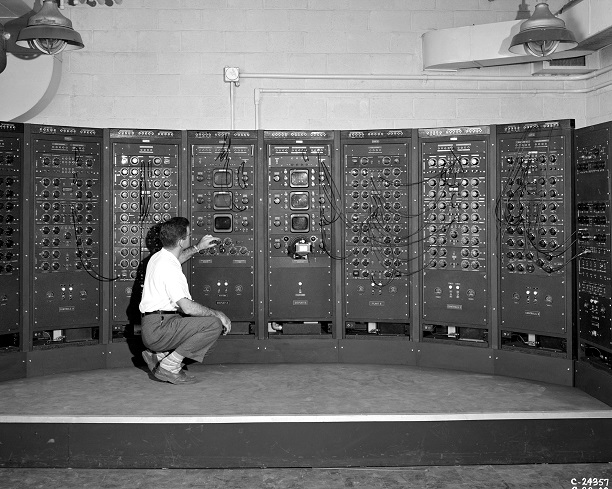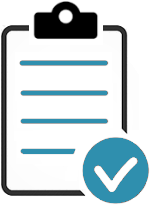The purpose of the Analysis and Evaluation Procedure is to establish and define the roles and responsibilities for collecting and analyzing data.
Contents
You must be able to show, through meaningful and relevant data, that your quality management system is effective. This will allow you to determine where targeted improvements can be made. Data used for this purpose should be gathered from within your organization and from any relevant external sources. Since each company is different, the data you gather will be unique.

Where the analysis shows unacceptable performance then those items should become Quality objectives 6.2 and where appropriate, become subject to preventive or corrective action.
Our Analysis & Evaluation Procedure is proven to work.
The purpose of analyzing data is to:
Data collected for analysis includes:

Effective data analysis is an essential part of any quality management system:
It is not a mandatory requirement to document your analysis & evaluation process. However, you should always look to adequately define and control any operational processes that generate information on the performance of your quality management system. Therefore, the implementation of an analysis of data procedure will be appropriate to many businesses.
Develop and implement a procedure that defines the roles and responsibilities for analyzing quality management system data in order to drive continual improvement and to facilitate a factual approach to decision making:
Our Analysis & Evaluation Procedure is proven to work.
The effectiveness of the analysis of data process is often determined by looking for evidence that the organization has sufficiently utilized data from the outputs of its activities and has used that data to drive continual improvement and enhance customer satisfaction.
Measuring the effectiveness of the analysis of data process is crucial to understand the impact of the procedure on the overall quality management system. This can include evaluating the effectiveness of data collection methods, the accuracy and completeness of data analysis, and the effectiveness of corrective and preventive actions taken as a result of the analysis.
Determining the most appropriate corrective or preventive actions based on data analysis is an important aspect of continuous improvement. This may involve identifying patterns and trends in data, determining root causes of problems, and evaluating the potential impact of different actions on the overall quality management system.
Using data analysis to drive continual improvement and enhance customer satisfaction is a key aspect of a successful quality management system. This may involve regularly analyzing customer feedback and complaints, monitoring performance metrics, and using the data to make informed decisions and take action to improve the system.
Using data analysis to assess organizational performance against established plans and stated quality objectives is an important aspect of quality management. By regularly evaluating data on customer complaints, nonconformities, and corrective and preventive actions, organizations can identify areas where the system is performing well and areas where improvements are needed.
Using data analysis to identify areas for improvement and determine the cause of problems is essential for continuous improvement. By analyzing data on customer complaints, nonconformities, and corrective and preventive actions, organizations can identify patterns and trends in the system and take action to address any issues that are identified.
Using data analysis to identify trends and opportunities for corrective action is an important aspect of quality management. By regularly evaluating data on customer complaints, nonconformities, and corrective and preventive actions, organizations can identify patterns and trends in the system and take action to address any issues that are identified.
Using data analysis to evaluate supplier performance is an important aspect of quality management. By regularly evaluating data on supplier performance, organizations can identify areas where suppliers are meeting or exceeding expectations and areas where improvements are needed.
Using data analysis to evaluate warranty claims and returned products is an important aspect of quality management. By regularly evaluating data on warranty claims and returned products, organizations can identify patterns and trends in the system and take action to address any issues that are identified.
Using data analysis to evaluate the results of product and process monitoring is an important aspect of quality management. By regularly evaluating data on product and process monitoring, organizations can identify patterns and trends in the system and take action to address any issues that are identified.
Using data analysis to evaluate rates of non-conformances is an important aspect of quality management. By regularly evaluating data on non-conformances, organizations can identify patterns and trends in the system and take action to address any issues that are identified.
A: The analysis and evaluation procedure is used to identify and evaluate opportunities for improvement in the quality management system. This can include analyzing data on customer complaints, nonconformities, and corrective and preventive actions to determine areas where the system may be weak and in need of improvement.
A: The data analyzed and evaluated as part of this procedure can include customer complaints, nonconformities, and results of internal audits and management reviews. Other data that can be analyzed include performance metrics, such as customer satisfaction or product defects, and data on corrective and preventive actions taken to address issues within the system.
A: The frequency at which the analysis and evaluation procedure should be carried out will depend on the size and complexity of your organization, as well as the specific requirements of your industry. It is typically carried out on a regular basis, such as annually or bi-annually, to ensure that opportunities for improvement are identified and addressed in a timely manner.
A: The analysis and evaluation procedure is typically carried out by the management team or a designated quality management representative. It is important that all relevant parties within the organization, such as management, employees, and customers, are involved in the process to ensure that all aspects of the system are considered.
A: The information gathered through the analysis and evaluation procedure is used to identify areas where the system is weak or in need of improvement. Once these areas have been identified, corrective and preventive actions can be taken to address the issues and improve the overall effectiveness of the system.
ISO 9001 9.1.3 Analysis & Evaluation is a process outlined in the ISO 9001 standard that involves collecting and analyzing data in order to evaluate the effectiveness of an organization's quality management system and identify areas for improvement.
This process includes analyzing data such as customer satisfaction levels, supplier performance, results of product and process monitoring, rates of non-conformances, and trends and opportunities for corrective action. The purpose of this analysis is to assess organizational performance, identify opportunities for improvement, and aid in determining the cause of problems. This process is crucial in order to drive continual improvement and enhance customer satisfaction.
Updated: 21st January 2023
Author: Richard Keen

Richard is our Compliance Director, responsible for content & product development.
But most importantly he is ISO's biggest fanboy and a true evangelist of the standards.
Learn more about Richard

Don’t Try to Manage It All Alone!
Our ISO Auditors and Quality Manager Trainers have been in this industry for years, and since 2002 we’ve been providing thousands of small businesses and large corporations with the tools they need to get certified.
Instead of trying to create everything you need to follow this process from scratch, use ours. We have procedures, templates, checklists, process maps, forms and gap analysis tools to help you control your documented information without missing a single input or output.
Before you invest all the hours reinventing the wheel, before you spend countless dollars outsourcing the task — try our templates.
| QMS ISO 9001 |
EMS ISO 14001 |
OH&S ISO 45001 |
|
|
Analysis & Evaluation Procedure The purpose of this procedure is to establish and define the roles and responsibilities for collecting and analyzing data. Forms & Reports also included:
Free Download - Control of Calibrated Equipment Procedure - this will give you a good idea of what to expect when you purchase the procedure. |
$19 USD |
|
|
Pay by Credit Card, Debit Card, PayPal or Apple Pay.


|
Please read our Money Back Guarantee. |
Bought by Small Businesses and Large Corporations our templates have been sold online and CD since 2002.
Used by:
The Templates are used by first-timers following our step-by-step, clause-by-clause guidance documents; and experienced Quality Managers wishing to streamline and improve their existing documentation.
The application of our templates and quality manuals is scalable and generic; regardless of the size and type of organization. The elements that form the quality management system are the same.
1. Our customizable templates save you time and money by offering a streamlined process to create your quality documentation
2. They’ve got everything you need in one simple template
3. Proven to work our templates have helped thousands of businesses big and small achieve certification
4. Documents use styles to make reformatting and rebranding a breeze
5. Our templates are generalizable for any industry or sector. The application of our templates is scalable and generic; regardless of the size and type of organization.